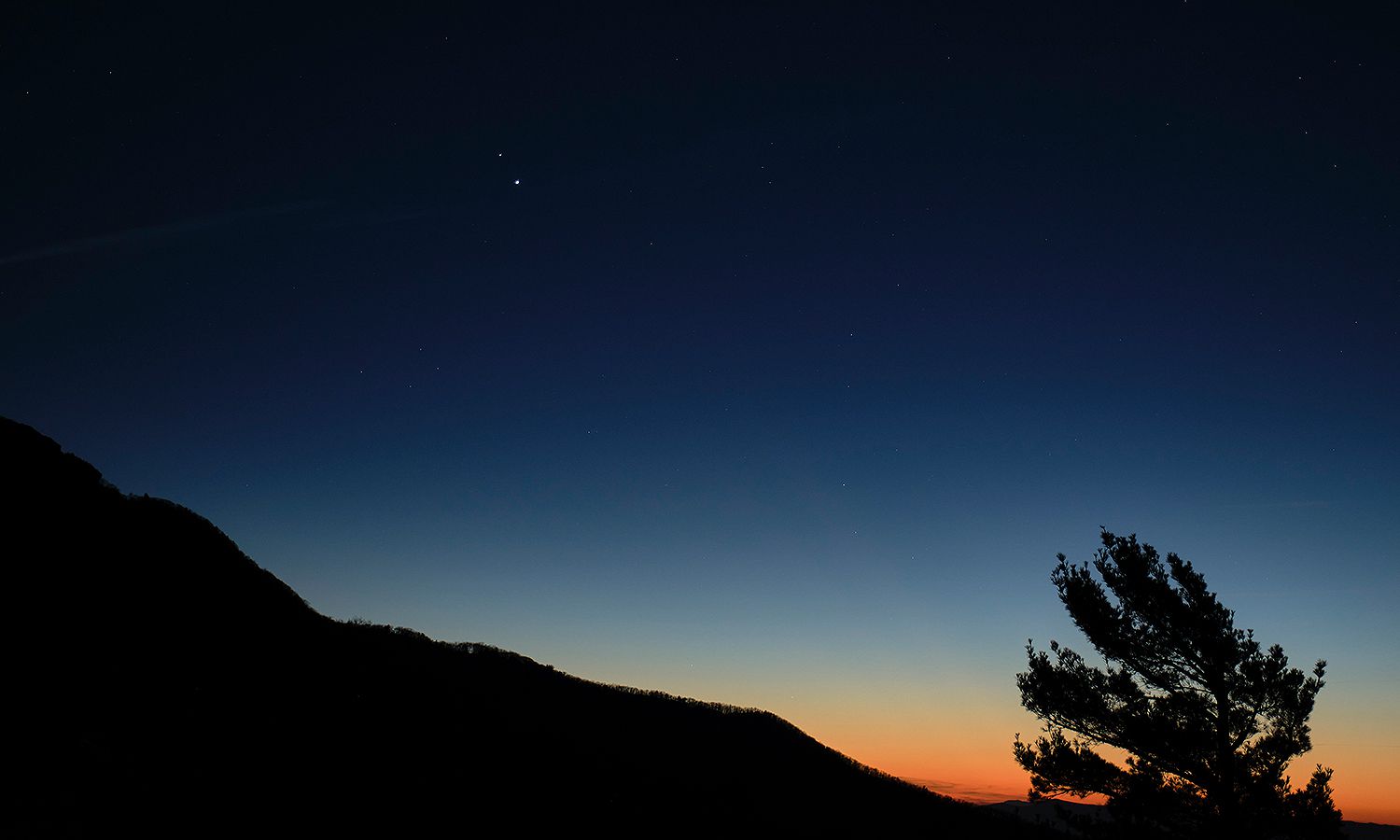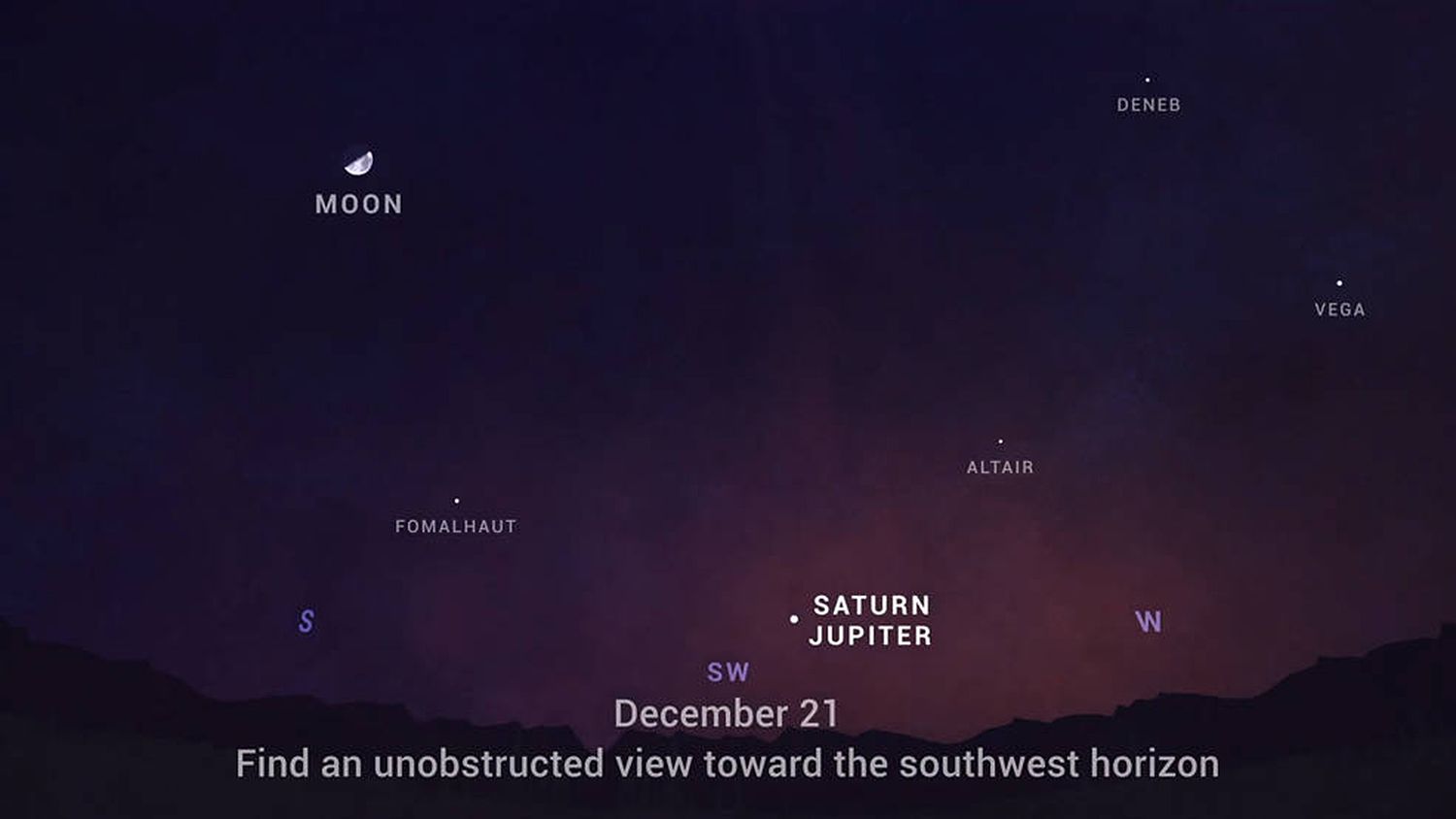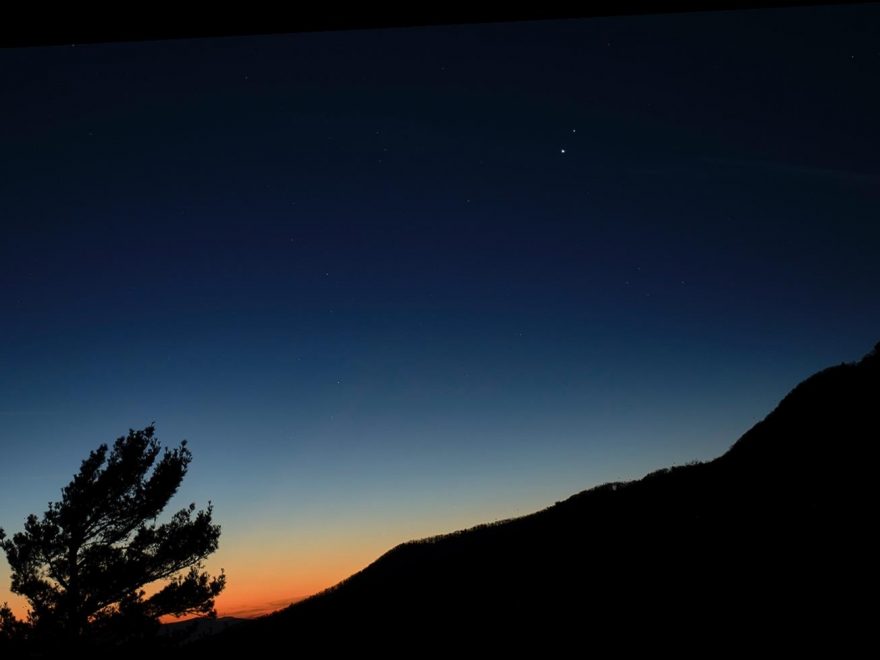
Skywatchers looking to the stars above on Monday, Dec. 21 are in for a special treat – and no, it’s not an early peek at Santa’s sleigh.
A planetary conjunction between Saturn and Jupiter is set to take place on the winter solstice, and its proximity to the holidays has earned it the nickname “Christmas Star.”
Planets appearing to pass each other in the solar system is a regular occurrence, and Jupiter and Saturn are aligned in the sky about once every 20 years, according to NASA.
But this year, they’ll be passing closer than they have in nearly 400 years — just a tenth of a degree apart — and for the first time in nearly 800 years, their alignment will happen at night.
So what exactly is a planetary conjunction? According to NASA, it simply means that Saturn and Jupiter will come together in a conjunction that’ll be visible from Earth (though in reality, they’ll still be hundreds of millions of miles apart in space).

The history of the phenomenon dates back to the “Great Conjunction” of 1623, when Jupiter caught up to and passed Saturn as they both traveled across the sky, according to NASA.
“You can imagine the solar system to be a racetrack, with each of the planets as a runner in their own lane and the Earth toward the center of the stadium,” Henry Throop, astronomer in the Planetary Science Division at NASA, said in a statement. “From our vantage point, we’ll be able to see Jupiter on the inside lane, approached Saturn all month and finally overtaking it on Dec. 21.”
Space lovers who want to catch a peek should find a spot with an unobstructed view, like a field or park, and look to the southwestern sky an hour after sunset, NASA advises.
Jupiter should be easy to spot, as it looks like a bright star, while Saturn, though slightly fainter, will be above it to the left until Monday night, when Jupiter will overtake it and they’ll swap spots.
Though you will be able to see the planets with your own eyes, NASA says binoculars or a small telescope will help you see Jupiter’s four large moons, if that’s of interest.
If you miss it, don’t fret —“great conjunctions” occur every 20 years, though Saturn and Jupiter won’t appear quite this close again until 2080.
Source: Read Full Article
